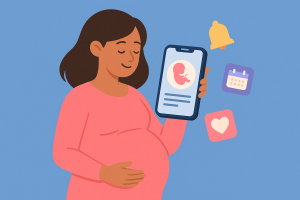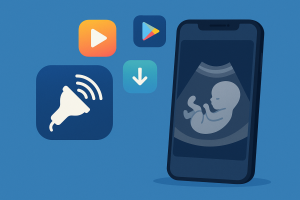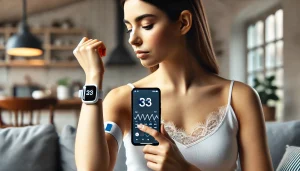Technological evolution has transformed several areas of knowledge and everyday life, and in medicine, this is no different. Especially in the field of imaging, digital innovation has enabled significant advances. Among these innovations, ultrasound-related applications stand out, which, although they do not replace traditional equipment, offer valuable resources for healthcare professionals.
These applications are developed with the aim of improving doctors' training, allowing quick image consultations and, in some cases, even facilitating the performance of procedures with the help of devices that can be attached to smartphones. They represent an important step towards making healthcare more accessible and efficient, especially in remote locations or in urgent situations.
Innovation in the Palm of your Hand: Ultrasound Apps and Devices for Cell Phones
The promise of turning smartphones into advanced medical devices is increasingly becoming a reality. Although performing a full ultrasound directly on your cell phone is still out of reach without the use of external devices, some apps and accessories are starting to pave the way for this possibility.
Butterfly iQ
O Butterfly iQ is a portable ultrasound device that, when connected to a smartphone or tablet via a dedicated app, can perform ultrasounds on different parts of the body. The associated application not only displays images in real time but also allows analysis and storage of these images.
This device is revolutionary as it is the first portable full-body ultrasound that connects directly to your smartphone. Its single-chip ultrasound technology makes medical diagnosis more accessible, especially in resource-poor regions.
Lumify by Philips
Lumify by Philips is another impressive example of how mobile technology can be used in healthcare. Through a transducer and a dedicated app, Lumify delivers high-quality ultrasound directly to your Android device, making it a powerful tool for medical professionals.
The Lumify app is designed to be intuitive and offers a range of image analysis tools, facilitating fast and accurate diagnoses across a range of medical specialties, from emergency medicine to obstetrics.
SonoAccess
O SonoAccess is an application more focused on the education and training of healthcare professionals in ultrasound. While it doesn't directly perform ultrasounds, it offers a rich library of videos, tutorials, and case studies to help doctors and students improve their ultrasound interpretation skills.
This application is an excellent tool for those who want to deepen their knowledge in ultrasound, with content regularly updated by experts in the field.
POCUS Focus
POCUS Focus is intended for learning and practicing Point-of-Care Ultrasound (POCUS). It provides educational resources, including video tutorials, articles, and procedure guides, making it a valuable resource for doctors who want to improve their bedside ultrasound skills.
This app is ideal for professionals looking to integrate ultrasound into their clinical practice, offering a convenient way to access information and training on the go.
Ultrasound Protocols
Ultrasound Protocols is a quick reference guide to the most common ultrasound protocols. It helps healthcare professionals remember the essential steps for performing different types of ultrasound exams, ensuring that standards of quality and accuracy are maintained.
This app is extremely useful for professionals in training or those who need a quick reminder about specific ultrasound procedures.
Expanding Horizons: Features and Potential of Ultrasound Applications
These apps and devices represent just the tip of the iceberg in terms of the potential of mobile technology in medicine. They not only facilitate access to important diagnostic tools but also promote the greater dissemination of medical knowledge and education. As technology advances, we can expect to see more innovations that will further transform medical practice, making it more accessible, efficient, and accurate.

FAQ: Frequently Asked Questions
- Can ultrasound applications replace traditional equipment? No, the apps and devices mentioned are complementary to traditional ultrasound equipment and are intended to facilitate access, education and interpretation of ultrasound images.
- Can anyone use these apps to have an ultrasound? No, use of these devices and applications is intended for trained healthcare professionals. Although access to images can be facilitated by these applications, proper interpretation and diagnosis require specialized medical knowledge.
Conclusion
Mobile ultrasound apps are opening new frontiers in healthcare, offering powerful tools for patient education, diagnosis and management. While there are still limitations, the potential for future innovation is immense, promising to transform the way we access and use ultrasound technology in medicine. As we continue to explore and develop these technologies, the future of mHealth looks bright and full of possibilities.



